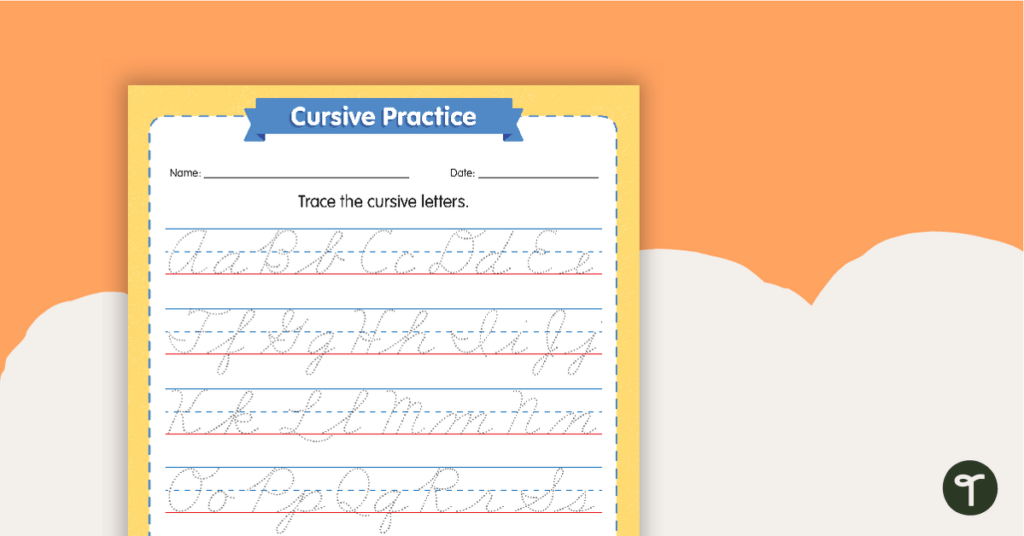Cursive Writing: A Complete Guide to Mastering Elegant Handwriting
Cursive writing is more than just a way to form letters it is an expressive art that blends rhythm, movement, and personal style into handwritten communication. In a world increasingly dominated by keyboards and screens, cursive writing remains a timeless skill that adds warmth, elegance, and individuality to words written by hand. Whether you are learning cursive for the first time or seeking to refine your handwriting into something truly beautiful, understanding its foundations and techniques can transform the way you write.
This comprehensive guide explores cursive writing in depth, from its definition and benefits to detailed practice methods and advanced stylistic techniques. By the end, you will have a clear roadmap to develop smooth, confident, and visually pleasing cursive handwriting.
What Is Cursive Writing?
Cursive writing is a style of handwriting in which letters are connected to one another in a continuous, flowing manner. Unlike print handwriting, where letters are often written separately, cursive emphasizes fluid motion and rhythm. Each letter typically begins where the previous one ends, allowing the pen to glide across the page with minimal lifting.
This style evolved to make writing faster and more efficient, especially when documents were written by hand. Over time, cursive also became associated with elegance and refinement due to its graceful curves and loops. Today, cursive writing serves both practical and artistic purposes, combining speed with aesthetic appeal.
Why Learning Cursive Writing Still Matters
Despite modern technology, cursive writing holds lasting value. It improves fine motor skills, strengthens hand–eye coordination, and enhances cognitive development by engaging multiple areas of the brain. Writing in cursive also encourages focus and intentional movement, helping writers slow down and connect more deeply with their words.
From a practical standpoint, cursive writing can be faster than print once mastered, making it useful for note-taking and journaling. On a personal level, cursive gives your handwriting a unique identity, turning ordinary notes into meaningful expressions of personality.
Essential Tools for Cursive Writing Practice
Choosing the right tools plays a significant role in developing beautiful cursive handwriting. The pen should glide smoothly without skipping or scratching the paper. Many beginners prefer gel pens or fountain pens because they respond well to pressure changes, which is helpful for creating thick and thin strokes.
Paper quality is equally important. Lined or guideline paper helps maintain consistent letter height, spacing, and alignment. As your skills improve, you may experiment with blank paper to develop greater control and confidence.
Comfort should never be overlooked. A pen that feels natural in your hand and paper placed at a slight angle can reduce strain and improve fluidity.
Understanding the Core Strokes of Cursive Writing
Every cursive letter is built from a small set of fundamental strokes. Mastering these strokes is essential before moving on to full letters and words.
Upward strokes are light and thin, created with minimal pressure as the pen moves upward. Downward strokes are heavier and thicker, formed by applying gentle pressure as the pen moves downward. Loops involve circular or oval movements that often appear in letters like “l,” “e,” and “g.” Curves are smooth, rounded motions that give cursive its signature softness.
Practicing these strokes individually helps develop muscle memory, making letter formation more natural and consistent over time.
Forming Lowercase Cursive Letters
Lowercase letters form the backbone of cursive writing, as they appear most frequently in everyday text. Beginners should start with simpler letters that rely heavily on basic strokes, such as “a,” “c,” “e,” and “i.” These letters help you practice curves and entry strokes without overwhelming complexity.
As confidence grows, move on to letters like “m,” “n,” and “u,” which emphasize rhythm and repetition. More advanced lowercase letters, such as “f,” “g,” and “z,” require careful attention due to their loops and descenders. Consistency in height, slant, and spacing is key when practicing these letters.
Mastering Uppercase Cursive Letters
Uppercase cursive letters are often more decorative and expressive than lowercase ones. They serve as visual anchors at the beginning of sentences and proper nouns, making them especially important for overall presentation.
Letters such as “A,” “C,” and “E” are excellent starting points, as they introduce gentle curves and controlled strokes. More complex uppercase letters like “G,” “Q,” and “S” may take longer to master due to their elaborate forms. Patience and repetition are essential, as uppercase letters often vary more in style between writers.
Connecting Letters Smoothly
One of the defining features of cursive writing is the seamless connection between letters. Proper connections ensure that words flow naturally without awkward breaks or collisions. Each letter typically has an exit stroke designed to lead smoothly into the next letter’s entry stroke.
Practicing letter pairs, such as “th,” “ch,” and “oo,” helps refine these transitions. Over time, you will begin to anticipate connections instinctively, allowing your writing to become faster and more fluid.
Developing Words and Sentences in Cursive
Once individual letters feel comfortable, the next step is forming complete words. Start with short, simple words and gradually increase complexity. Focus on maintaining consistent spacing between letters while leaving slightly larger gaps between words for clarity.
Writing full sentences helps you practice rhythm, slant, and alignment across longer text. This stage also improves endurance and speed, allowing you to write smoothly without tension or fatigue.
Improving Consistency and Rhythm
Consistency is the hallmark of beautiful cursive writing. Uniform letter height, steady slant, and balanced spacing create a polished and professional appearance. Rhythm plays an equally important role, as cursive writing relies on continuous motion rather than isolated strokes.
Daily practice, even for short periods, strengthens muscle memory and reinforces consistency. Writing slowly and deliberately at first ensures accuracy, while speed naturally increases with familiarity.
Advanced Techniques to Enhance Cursive Style
Once the basics are mastered, advanced techniques can elevate your cursive writing from neat to truly elegant. Varying line thickness by adjusting pressure adds visual interest and depth. This technique is especially effective with pens that respond well to pressure changes.
Flourishes and embellishments can be added to ascenders, descenders, or uppercase letters to create a more artistic look. However, restraint is crucial. Subtle flourishes enhance beauty, while excessive decoration can reduce readability.
Alignment and spacing should remain consistent, even when adding stylistic elements. Guidelines or practice sheets can help maintain balance as you experiment with advanced techniques.
Common Challenges and How to Overcome Them
Many learners struggle with inconsistent slant, uneven spacing, or shaky lines. These issues often stem from rushing or gripping the pen too tightly. Relaxing your hand and slowing down can significantly improve control.
Another common challenge is overcomplicating letters. While cursive allows for creativity, clarity should always come first. Simple, clean letterforms provide a strong foundation for later embellishment.
The Role of Posture and Hand Position
Proper posture and hand position are often overlooked but play a critical role in cursive writing quality. Sitting upright with relaxed shoulders reduces fatigue and improves control. The paper should be angled slightly to match the natural movement of your hand.
Holding the pen gently rather than tightly allows smoother motion and better pressure control. A relaxed grip encourages fluid strokes and reduces strain during longer writing sessions.
Daily Practice Strategies for Lasting Improvement
Effective practice does not require hours of repetition. Short, focused sessions practiced consistently yield better results. Begin with warm-up strokes, move on to letters or words, and finish with sentence writing.
Keeping a practice journal can help track progress and identify areas for improvement. Over time, you will notice increased confidence, speed, and uniformity in your cursive handwriting.
Comparing Print Writing and Cursive Writing
Below is a simple comparison highlighting key differences between print and cursive writing:
| Feature | Print Writing | Cursive Writing |
|---|---|---|
| Letter Connection | Letters are separate | Letters are connected |
| Writing Speed | Generally slower | Faster once mastered |
| Visual Style | Simple and structured | Flowing and elegant |
| Personal Expression | Limited | Highly expressive |
Building Your Unique Cursive Style
Every person’s cursive handwriting is unique. While learning from examples is helpful, true mastery comes from adapting techniques to suit your natural movement and preferences. Over time, your writing will develop its own character, reflecting both skill and personality.
Experimenting with slight variations in slant, spacing, or letter shapes allows you to discover what feels most comfortable and visually pleasing. This personal touch is what makes cursive writing truly special.
Conclusion
Cursive writing is a timeless skill that blends functionality with artistry. By understanding its foundations, practicing consistently, and gradually incorporating advanced techniques, anyone can develop elegant and confident cursive handwriting. The journey requires patience, focus, and dedication, but the reward is a writing style that is both beautiful and uniquely yours.
In a digital age, cursive writing remains a powerful form of self-expression—one that connects the mind, hand, and heart through flowing lines and graceful motion.
Frequently Asked Questions About Cursive Writing
What is cursive writing?
Cursive writing is a handwriting style in which letters are joined together in a continuous, flowing manner, creating smooth and elegant text.
Why should I learn cursive writing?
Learning cursive improves handwriting speed, enhances fine motor skills, supports cognitive development, and adds personal style to written communication.
What tools are best for cursive writing practice?
Smooth-flowing pens, such as gel or fountain pens, combined with lined or guideline paper, are ideal for practicing cursive writing.
How long does it take to master cursive writing?
The time required varies by individual, but consistent daily practice over several weeks or months can lead to noticeable improvement and confidence.
Can cursive writing become a personal art form?
Yes, once the basics are mastered, cursive writing can be customized with stylistic choices and subtle embellishments, making it a unique form of personal expression.







